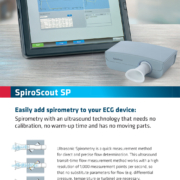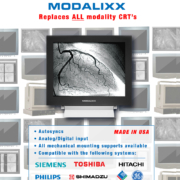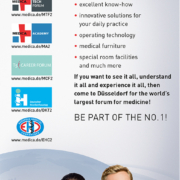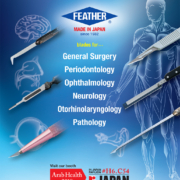Remote monitoring – a new frontier in the fight against cardiovascular disease
The growth in the use of modern, implantable cardiovascular devices has been accompanied by efforts to have them monitored by professionals at a distance. The principal driver for this has been convenience. However, over recent years, remote monitoring (RM) of cardiovascular devices is emerging not only as an alternative to the clinic, but in some cases as a source for enhancements to quality of care. Several professional societies have issued authoritative guidelines recommending RM for all eligible patients.
Device complexity and data transfer
Formally known as cardiovascular implantable electronic devices (CIEDs), equipment such as pacemakers, cardioverter defibrillators, loop recorders and hemodynamic monitors are technologically complex and equipped with an array of microelectronics, high computational capability and onboard firmware.
In turn, this allows for assessment, storage and remote transfer of a range of data via a transmitter placed in proximity to the patient. Examples of such data include device function, diagnostics and fault codes, to therapy delivery and intra-cardiac hemodynamics, as well as reports on patient clinical status and alerts on cardiovascular events.
Developments in remote monitoring technology
On their part, remote monitoring techniques too have undergone their own evolution – from the original telephonic check-up of pacemaker battery levels and wand-based systems with patient-driven downloads, to current generation products which transmit data through stationary or mobile transmitters by either analogue/digital wired or wireless communication. Once transmitted, medical staff can check the information via a secure Website. Both the type and volume of transmitted data is similar to that obtained from direct interrogation.
Technically, it is important to differentiate between ‘remote interrogation’ and ‘remote monitoring’. The former involves periodic device interrogation performed manually at home by the patient or automatically at predefined points by the monitoring system. RM involves continuous device monitoring, one of whose key features is to trigger transmissions in case of alerts.
Convenience and workflow bottlenecks
Remote monitoring eliminates the need for routine, periodic visits to a clinic after CIED implantation. Most international guidelines specify that patients fitted with CIEDs should be followed up routinely, with the frequency depending on the device type and model – for instance, at Months 1 and 3 for implantable cardioverter defibrillators (ICDs). Key checks include those on battery, lead impedance, sensing amplitude, pacing threshold and arrhythmic events.
One of the most perceptible advantages of RM is of course convenience. Before it became available, patients with CIEDs had to visit clinics for periodic checks. This was a problem for several categories of patients – above all, those living in rural areas and those needing to be escorted by families due to frailty. These factors assume additional significance since the number of CIED patients has not only been increasing due to maturing technology and expanded indications, but also because an ageing society means that more people are in need of the devices. As a result, it is becoming ever-tougher to make appointments for CIED checks, and many patients who do not have RM can spend several hours waiting at a hospital for their turn.
Remote monitoring eliminates such bottlenecks and choke points. Analysis of RM data before a patient visit can shorten the time required for direct interrogation and intervention, especially should a need arise to determine the cause and management of a problem. If such a problem is only detected during a clinic visit, a patient would have to wait for the results to be verified, while the problem is detected, analysed and resolved.
According to some estimates, time required by physician to review RM data is approximately 10 minutes compared to a half-hour to complete CIED follow-up visits in a clinic.
Apart from routine transmission, special real-time protocols exist in RM for alerts, such as data anomalies, inappropriate therapy or other abnormalities. In such cases, the transmitter is usually linked to a central secure server to back up or distribute the results to a larger number of experts for further analysis and opinion.
RM data essentials
Typical data reported by RM include arrhythmic events (real-time intra-cardiac electrocardiogram, to determine if the event is supra-ventricular or ventricular), premature ventricular contractions (based on PVC frequency recording), atrial fibrillation (especially promising for patients with no prior history of AF, to allow rapid anticoagulant drug administration and prevent stroke), non-sustained VT (although this is mainly considered for ICD or CRT-D patients, rather than those with pacemakers) and VT/VF (to enable a therapy decision and whether it can be managed at home).
The Finnish ICD study
Meanwhile, rigorous observational and randomized studies have demonstrated a variety of clinical benefits, along with a high degree of patient satisfaction as well as cost effectiveness.
One of the first major studies on remote monitoring of ICDs was carried out in 2005-2006 at the Oulu University Hospital, Finland. The system consisted of a portable patient monitor, a secure database and website, at which clinicians could view and analyse data.
The study’s goal was to provide comprehensive information on the safety, ease of use, satisfaction and data acceptance by both clinicians and patients, and the cost-effectiveness of remote monitoring in a location characterized by long travel distances to the clinic.
The outcomes were satisfactory.
There were, first of all, no device-related adverse events.
80% of the remote-monitoring sessions were performed by the patients without any assistance. Indeed, ease of use and satisfaction by both patients and clinicians made an especially strong case. Most patients found the instructions ‘clear’ or ‘very clear’, with monitor set up ‘easy’ or ‘very easy’. What was equally significant was the lack of any major difference in patient feedback from the first test, at 3 and 6 months, and even during unscheduled visits.
On their side, clinicians too drew similar conclusions on ease of use and satisfaction, with the majority finding data comparable to traditional device interrogation. Just two of 137 physicians felt an in-office visit would have provided more detailed information on device function, as it was not possible to measure the pacing threshold remotely.
Early detection of clinical events
Since then, other studies have reconfirmed the immense promise of RM.
In 2010 ‘Circulation’ published results of a trial on automated remote monitoring of implantable cardioverter-defibrillator called TRUST (Lumos-T Safely Reduces Routine Office Device Follow-up).
This study, on 1,339 patients, confirmed that the burden of visiting a clinic was greatly reduced by using RM, and that it saved valuable time and resources. The study found that in-hospital evaluation numbers dropped by 45% without affecting morbidity.
The TRUST trial also established that RM facilitated early detection of clinical events, in some cases dramatically. For example, the median period from onset to physician evaluation of combined first atrial fibrillation (AF), ventricular tachycardia (VT), and ventricular fibrillation (VF) events with RM was 1 day. By comparison, conventional care reported a median period of 35.5 days. System-related problems (such as lead out-of-range impedance) occurred over four times less frequently with the RM group, although the incidence in either setting was far too low to make meaningful comparisons.
Wireless RM and cardiac hospitalization stays
The utility of wireless remote monitoring with automatic clinician alerts was the subject of another trial called CONNECT (Clinical Evaluation of Remote Notification to Reduce Time to Clinical Decision). This multicentre, prospective, randomized study of almost 2,000 patients with high-energy CIEDs lasted for 15 months. Its results were published in ‘The Journal of the American College of Cardiology’ in 2011, and reported a decrease in mean length of stay per cardiovascular hospitalization visit from 4 days in an in-office setting to 3.3 days with RM. The CONNECT study also found a dramatic reduction in the median time to a clinical decision in response to events, from 22 days at a clinic to 4.6 days using RM.
Other benefits of RM
RM has also established some other dramatic benefits. In 2013, ‘The European Heart Journal’ reported on ECOST, a randomized study on remote follow-up of ICDs. ECOST found that patients with RM had a 52% reduction in inappropriate shocks, fewer hospital admissions after such events and 76% fewer capacitor charges, leading to longer battery life.
In December 2014, a report in ‘The Journal of Arrhythmia’ noted that in prophylactic ICD recipients, the recommended 3-month in-office follow-up interval could be extended to 12 months with automatic daily RM, and that this reduced the ICD follow-up burden over a 27-month period after implantation. The 12-month interval resulted in more than halving the total number of in-clinic ICD follow-ups. In addition, no significant difference was found between the two groups (3-month in-clinic follow-up versus 12-month RM) in mortality, hospitalization rate, or hospitalization length over the observation period.
Mortality reduction with RM
Indeed, some experts propose that RM may reduce mortality in patients with CIEDs.
One study called ALTITUDE assessed long-term outcomes after ICD and cardiac resynchronization therapy (CRT) implantation and the impact of RM on almost 70,000 ICD and CRT-plus-defibrillator (CRT-D) patients. It found that one- and 5-year survival rates were 50% higher in comparison to about 115,000 patients who received CIED follow-up in office visits.
The future: patients generally satisfied with RM
As technology continues to evolve, both new possibilities and questions are emerging. In the years to come, remote monitoring holds forth considerable promise for future research, given that massive amounts of data have already been collected from patients.
In spite of some typical first-mover tech concerns, RM has proven to be easy to use and well accepted, even by the elderly people and patients with low education levels. There are some patients, however, who do not accept RM. This is mainly due to suspicions about technology and the risk of losing human contact with nurses and physicians. In such cases, patient education is critical.
The other challenge involves keeping track of a flood of data and alerts from a fast-growing pool of patients. As described previously, RM detects cardiovascular events much earlier than conventional follow-up. As a result, it is becoming essential to assess whether this translates into clinical benefits for patients, or whether earlier detection of events due to RM excessively increases clinic visits; the latter might well reduce clinical benefits.
On their part, patients continue to be satisfied with RM in terms of ease of use. One Italian study at San Filippo Neri Hospital in Rome has reported a more favourable change in quality of life over a 16-month period in RM patients, compared to those lacking access to RM. Benefits which have been specifically highlighted include the patients’ peace of mind, psychological well-being, and safety.











